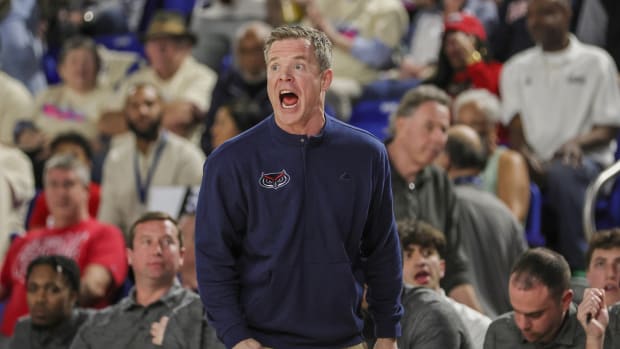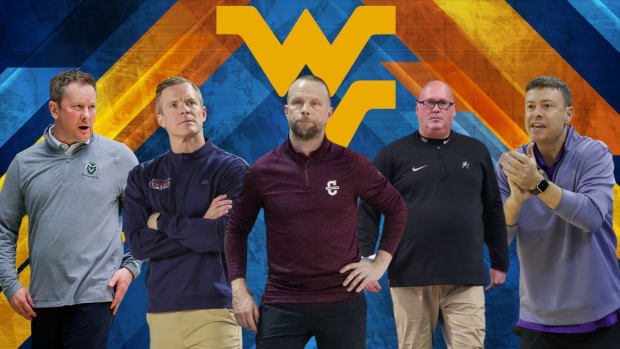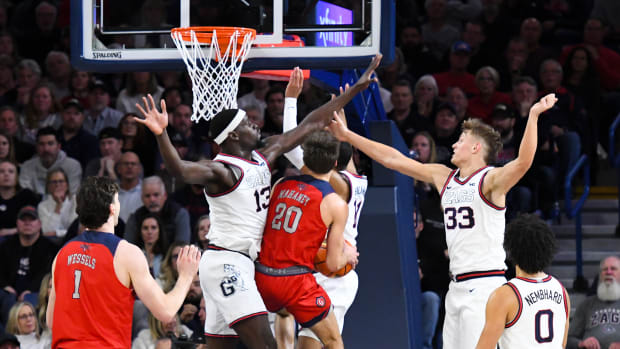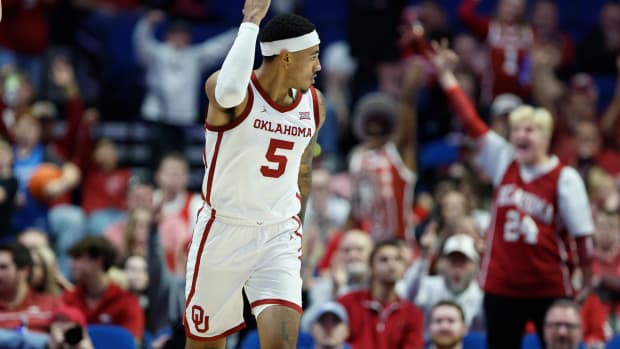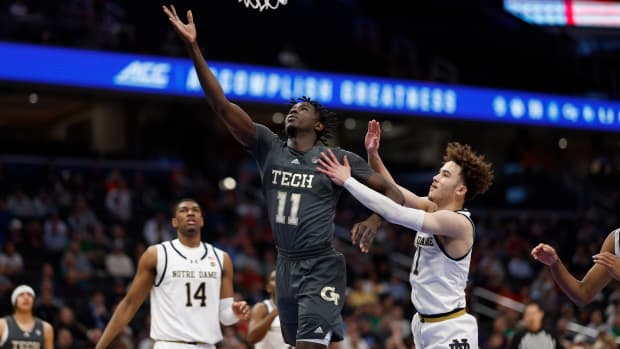Grand Canyon on the rise, on and off the court
PHOENIX (AP) Brian Mueller zips across Grand Canyon's campus in a golf cart, waving to students who greet the university's president by his first name.
At nearly every turn, he drives past a structure under construction: A 170,000 square-foot engineering building, a state-of-the-art soccer stadium, residence halls, an office complex for 1,500 employees.
This was Mueller's vision when he arrived at the private university in the heart of Phoenix eight years ago. He's helped make it a reality by using the university's for-profit funding model to push the men's basketball program toward Division I status with the help of local basketball icons Jerry Colangelo and Dan Majerle.
''We had to come up with a plan to allow the university to first survive and then to thrive,'' Mueller said. ''There were a number steps taken in that direction that were fortunately very successful.''
When Mueller was hired in 2008, Grand Canyon was a private Christian college with 900 students, a mountain of debt and a men's basketball team that operated deep under the shadows of the state's three Division I programs.
Grand Canyon turned for-profit in 2004, but it wasn't until Mueller arrived four years later that it became a public-traded company, which helped the school raise $254 million to fund the current campus expansion. Overall, the school has invested $800 million into its infrastructure and technology since 2008.
''After years of being a small private college that was hugely in debt, it needed something that was going to be completely different,'' Mueller said. ''We came with the intent to go get capital from public markets and use it to fund the university. That's a very different way of doing it, but it's been very successful.''
Since 2008, Grand Canyon's campus has doubled to 200 acres, enrollment increased to nearly 16,000 and new buildings have gone up all over, including a basketball arena in 2011. Grand Canyon also recently collaborated with the City of Phoenix on a $10 million renovation of nearby Maryvale Golf Course to give the golf team its own course and practice facility.
But as the school pushed to go Division I, the for-profit model became a target.
Numerous schools criticized GCU's funding model, saying the emphasis would be on making money and appeasing shareholders instead of educating students.
Led by Arizona State's Michael Crow, the Pac-12's school presidents sent a letter to the Division I board of directors in 2013, questioning allowing for-profits in Division I. Several schools canceled events or refused to schedule games with GCU.
The uproar has mostly died down.
Grand Canyon has big-name schools like Duke, Louisville, Illinois and San Diego State on the men's basketball schedule next season. The Antelopes also will play Arizona, one of the schools initially against their move to Division I.
Grand Canyon also has initiated the process to transition back to a nonprofit status now that it is back on solid financial footing.
''I think people are getting very comfortable with who we are and the funding model has become immaterial to them,'' Mueller said.
The money helped push one of Mueller's big initiatives: Make Grand Canyon a recognizable entity and competitive with schools across the country.
Because Grand Canyon does not have football, men's basketball is its marquee program. Yet with Arizona State in the area and both Arizona and Northern Arizona in-state, the Division II Antelopes were never able to gain traction.
The only way to really elevate the program - and the rest of GCU athletics with it - would be a transition to Division I.
To get that ball rolling, Mueller had an ace up his sleeve: Colangelo.
The former Phoenix Suns owner and chairman of USA Basketball initially served on Grand Canyon's board of directors, then agreed to help establish GCU's sports business program.
Colangelo helped build the business program - it's now called the Colangelo College of Business - and guide the Antelopes' transition to Division I, which becomes official in 2017-18.
''My attitude has always been, when people tell me you can't get that done, I kind of fight that and know in my heart of hearts that if you believe in your capacity to get things done, you go ahead and do it,'' Colangelo said. ''I was really pleased because I knew it would have great impact on future of university.''
One of Colangelo's biggest contributions was helping to lure Majerle.
Colangelo had a belief in Majerle when he drafted the go-hard-all-the-time-forward in 1988 and knew he would be a perfect fit for GCU.
One of the most popular figures in Phoenix sports history, he became available in 2013 when he resigned as an assistant coach after the Suns fired Alvin Gentry and failed to promote Majerle.
He jumped at the chance to coach at GCU, and the Antelopes have gotten steadily better in his three seasons, finishing 27-7 overall and 11-3 to tie for second in the WAC. The excitement level has risen with it, turning the 7,000-seat arena into one of college basketball's rowdiest environments.
''He's done an incredible job in a short time,'' Colangelo said.
Grand Canyon's other sports programs aren't bad, either.
GCU hired former big leaguer Andy Stankiewicz away from the Seattle Mariners - he was their minor league coordinator - and the Antelopes won the WAC baseball title in 2015. GCU also hired former SMU and FC Dallas coach Schellas Hyndman to lead the men's soccer program, and a new stadium is going up on campus.
The women's track team won its fourth straight WAC indoor title and the men gave the Antelopes an indoor sweep earlier this year. The softball team won a WAC title in its first Division I season a year ago, while the men's swim and beach volleyball teams have been ranked in the top 25 this season.
''Our goal is to be in the top 25 in every program we have,'' Mueller said. ''We're moving in that direction.''
